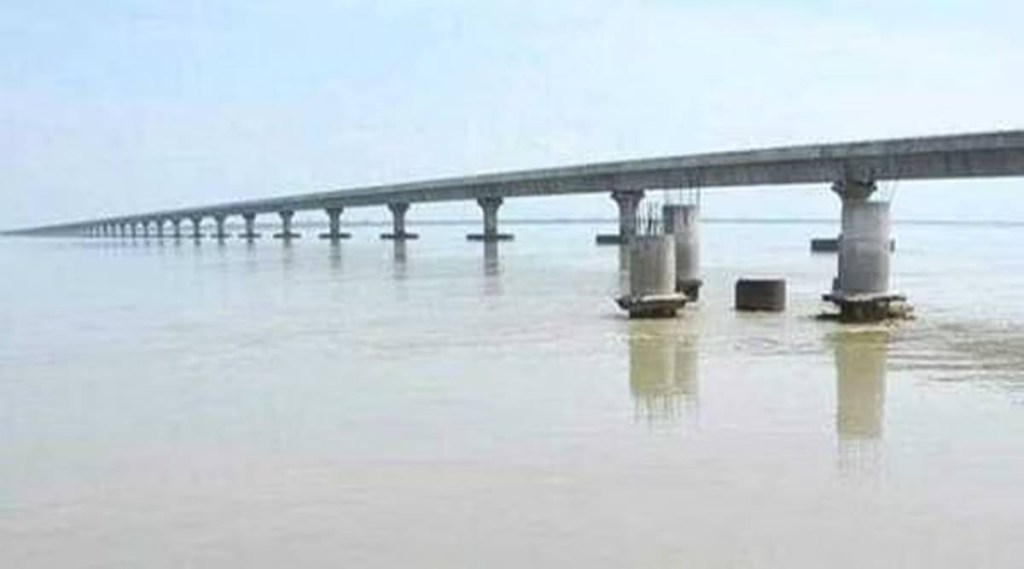The Siang River, sometimes called the Dihang River, serves as the Brahmaputra River’s principal tributary. Arunachal Pradesh’s Siyang and Assam’s Luit, Dilao are transboundary rivers that flow through Tibet, India, and Bangladesh. The inhabitants of Arunachal Pradesh and Assam depend on siang to thrive. It was connected to it by the tributaries Shap Chu, Nayang Chu, Rang Chu, Yarling Chu, Tong Chu, Shang Chu, Kyi Chu, and Po- Tsangpo before it entered India. In the spring, when the Himalayan snow melts, the river is vulnerable to disastrous floods.
The once-blue river has almost completely turned black, making it unfit for human usage in any way. This has an impact on the river’s quality and uses. According to a water testing report provided by the State Water Quality Testing Laboratory (SWQTL), the Siang River’s water is no longer suitable for human consumption.
Also read| The Brahmaputra River as a Transboundary Water Resource: Lessons from Costa Rica?
Many fishermen’s means of subsistence will be impacted by the decline of riverine fishing. The generation of hydroelectricity has suffered since the river’s flow has been significantly decreased. Siang is not a safe place for rafting because of the buildup of silt and building debris. Consequently, the pollution that the river is causing has led to the loss of life and property.
Also read| Relooking India-China Water Relations: A Major Concern?
China intends to construct a dam near the Great Bend to reroute the waters to the northern part of the nation. Chinese experts claimed that such a detour would be impossible for China to accomplish. On April 22, 2010, China announced that it was in fact constructing the ZangmuDam on the Brahmaputra in Tibet. However, China reassured India that the project would not significantly affect the downstream flow to India.
An increase in grassroots opposition to Chinese upstream dam construction has been observed in recent years, particularly in the state of Assam. Additionally, criticism of the Indian government for what is believed to be a lack of a proper response to Chinese hydropower ambitions has grown. The quality, quantity, and breeding grounds of the water are impacted by dams, which also change the river hydrology upstream and downstream.
In a nutshell, Siang is integral to the lives of many people, many of them reliant on the river for their survival and chances for future growth. But death and destruction have resulted from Siang’s recent state of disarray.
Given that Chinese construction activity is the cause of pollution, China has been engaging in unrestrained development, and as a result, construction waste has spilled downstream to lower riparian nations like India.
It should be emphasized that the Siang River’s immediate neighborhood lacks any significant polluting enterprises. Furthermore, there are no indications of any significant industrial sewage discharges into the Siang River after it reaches India. So, even if the source of the pollution is outside of India, Indians are nonetheless suffering from its impacts.
It was falsely claimed by the state-run Chinese daily “Global Times” that since Arunachal Pradesh is a part of China, there is no possibility of China contaminating the Siang river. For both upper and lower riparians, international law offers a variety of precedents on water usage rights and obligations. Equitable use is guaranteed under customary international law for transboundary freshwater resources.
It is crucial to recall that the Madrid Declaration of 1911 stipulates that states cannot change the regime of rivers and lakes, whether they are contiguous or follow one another, without the other state’s permission. China’s actions are thus in violation of international law. Similar to this, Article 2 of the Montevideo Declaration of 1933 states that no state may introduce any changes that might be harmful to other interested states into international watercourses without the other riparian state’s permission. This applies to both industrial and agricultural uses of these waters.
The author is a foreign policy analyst and a columnist who mainly tracks South Asia. He tweets @ashrafnehal19.
Disclaimer: Views expressed are personal and do not reflect the official position of the author’s institution or policy of Financial Express Online. Reproducing this content without permission is prohibited.

